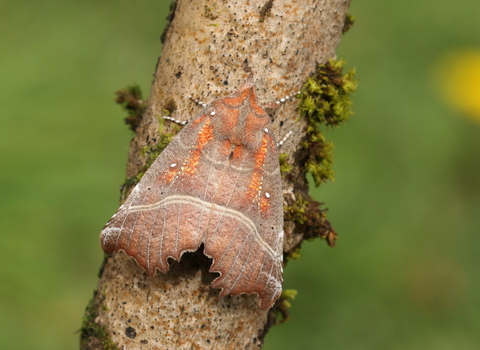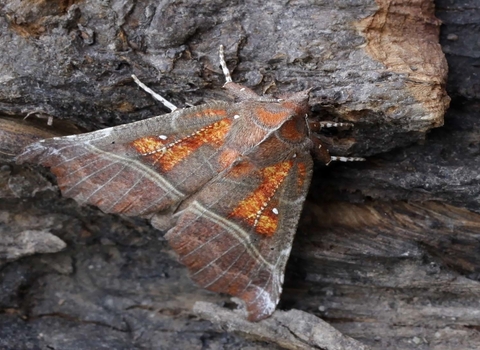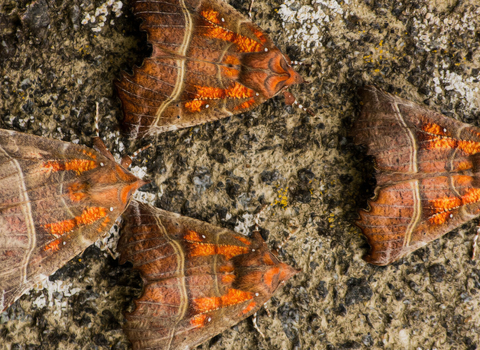
Herald © Vaughn Matthews

Herald ©Margaret Holland

Heralds (c) Bob Coyle
Herald
This unmistakable moth spends the winter as an adult, tucked away in a sheltered spot like a cave or outbuilding.
Scientific name
Scoliopteryx libatrixWhen to see
Adults: August to JuneCaterpillars: May to September
Species information
About
Heralds are one of the few moths that spend the winter as an adult. They take to the wing in late summer, then in autumn they seek out a cool, dark, sheltered spot. This could be a cave, a shed, an old barn, or any similar structure. They'll cling to a wall or ceiling all winter, before emerging to feed again in spring. Several heralds can often be found sheltering together, sometimes with other species of wintering moths and butterflies.Herald moths fly at night and visit flowers to feed, including ivy flowers in autumn. They also feed on overripe berries and can be attracted to sugar solutions put out to lure in moths. They are sometimes attracted to lights.
Heralds are found in a wide variety of habitats, including parks and gardens — just about anywhere their foodplants are available. The caterpillars feed on willows and poplars. They pupate in a sparse silk cocoon spun between leaves.
How to identify
A distinctively shaped moth with broad wings that end in hooked tips, with heavily scalloped outer edges. The wings are brown with pink or purplish hues, and orange blotches near the base. There is a white line running across the wings about a third of the way along, with a further pair or white lines at about two thirds. There are also white lines running along the length of the wings, a little like veins on a leaf.The caterpillar is long and green, with a bulbous head. A dark green line runs down the back, with a white or yellow line running along each side, edged below with dark dashes.
